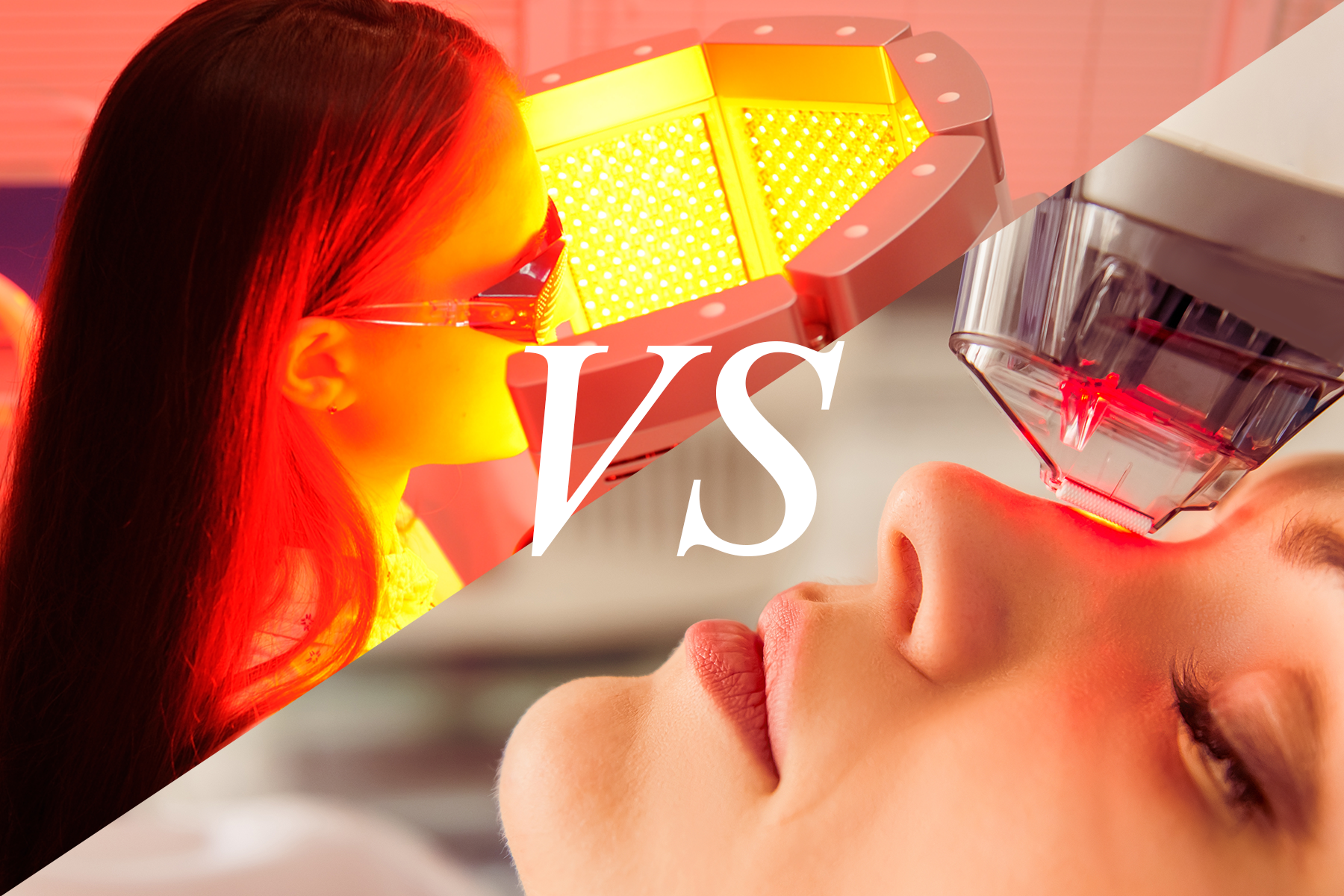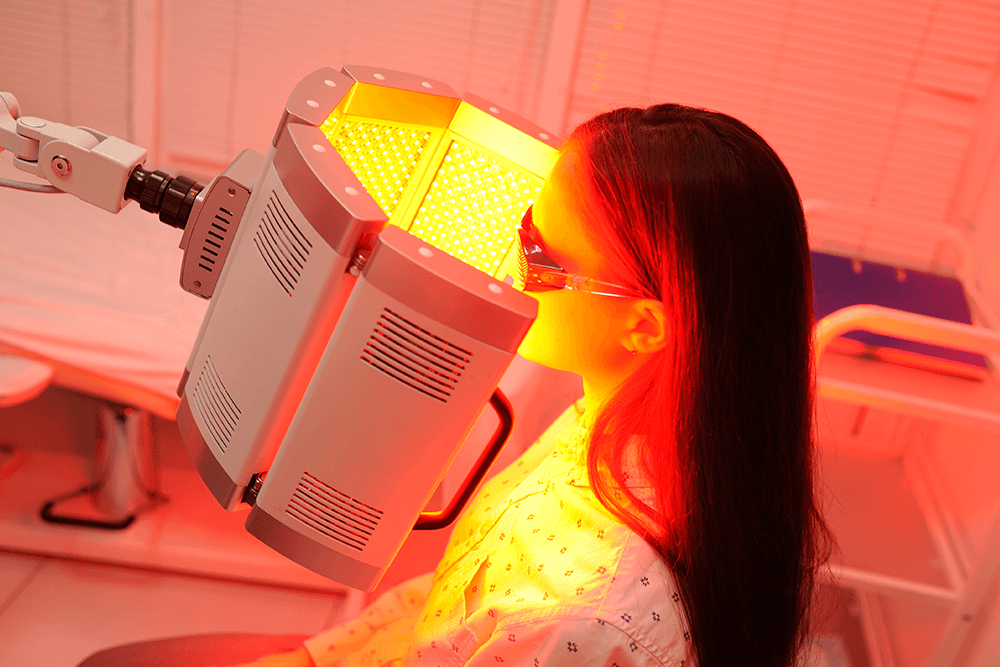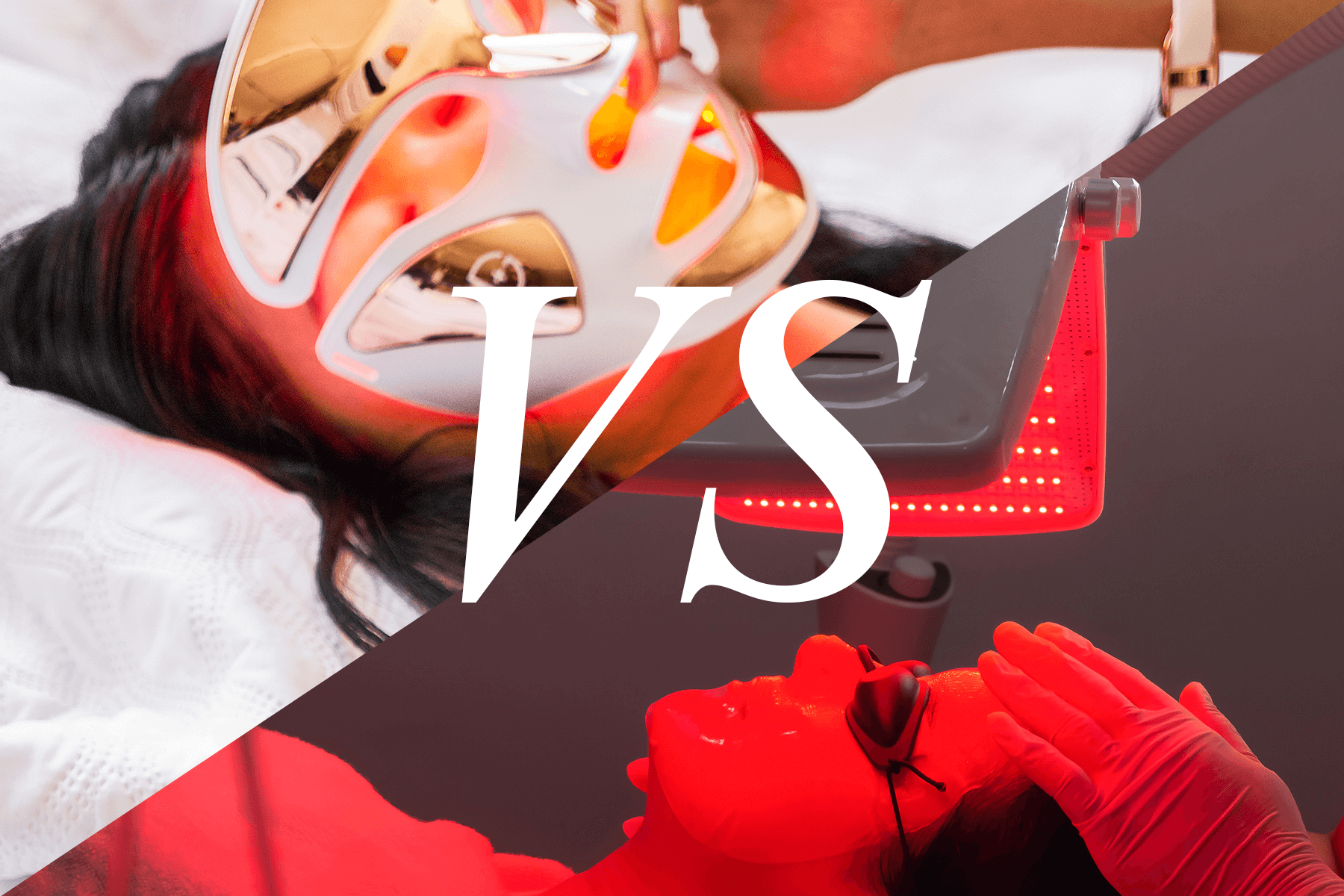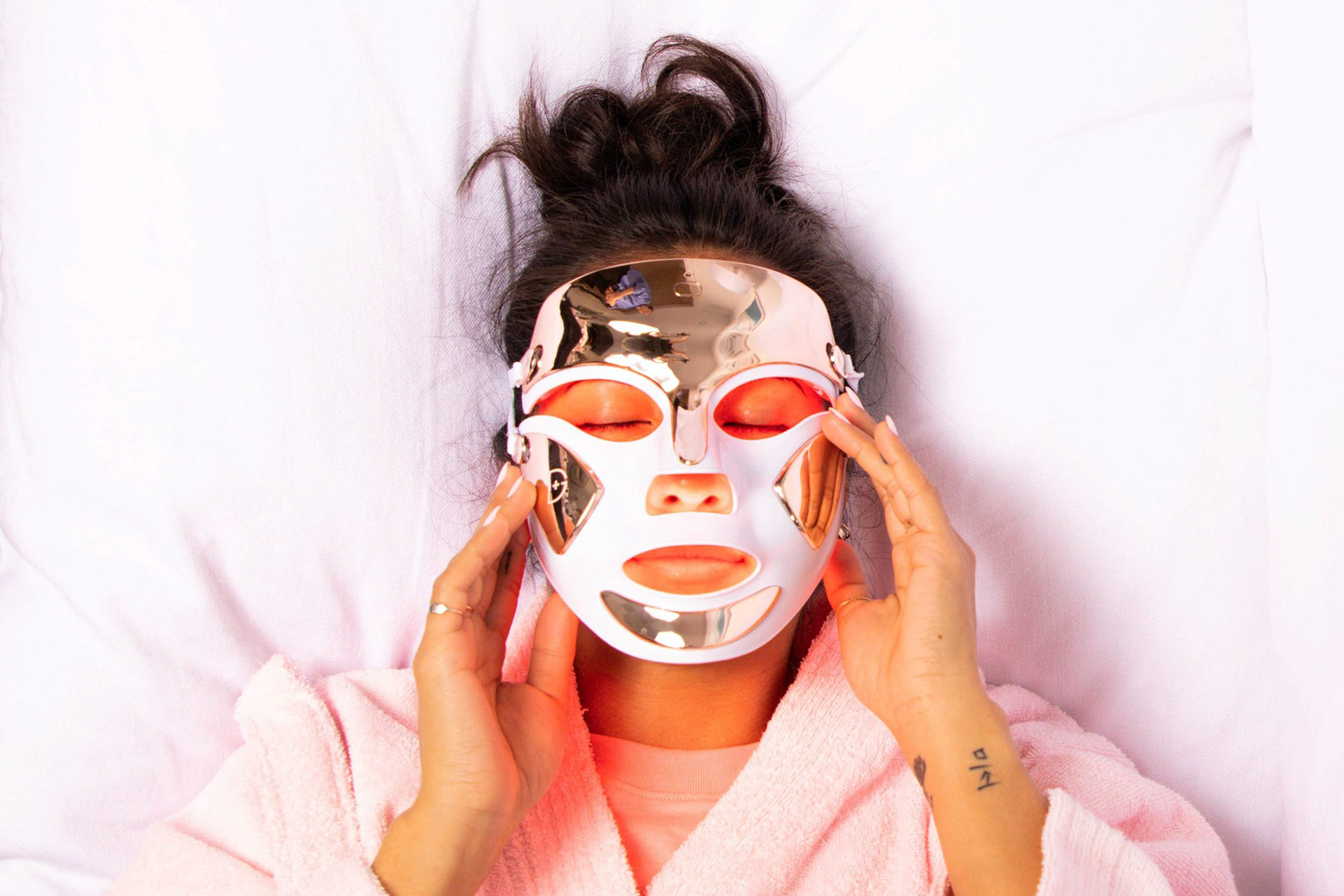The+Source
Dermatologists love light-based skin therapies, such as light-emitting diodes (LEDs) and lasers, because they have been proven, time and again, to deliver on their claims, whether it’s reducing wrinkles or reducing acne. (There’s nothing a derm loves more than a peer-reviewed study published in a top medical journal.) But while the terms are often used interchangeably, LEDs and lasers are decidedly not the same thing. Understanding more about each treatment type can help you make an informed decision about which is the best choice for solving your particular skin concern.
What are LEDs?
Because it produces light, you may think that an LED is just another kind of lightbulb, similar to the one in your bedside lamp. But actually, LEDs are semiconductors that generate light when they’re run through by electric current. Inside that semiconductor material are energy bands containing electrons and electron holes. Depending on how those bands are spaced, the LED will emit certain wavelengths and colors of light particles (otherwise known as photons). While you may see one solid color when an LED is on (red, for example), the LED is actually emitting multiple wavelengths of light. (This will be important to remember when we get to lasers.)
The energy output of LEDs is low—like, really low. Wave your hand in front of a panel of shining LEDs and you likely won’t feel a thing (although that doesn’t mean they aren’t working.) LEDs are currently used in everyday items, such as car headlights and traffic signals, as well as in medical devices targeting external skin issues (like wound healing, acne, wrinkles, and more) or internal concerns (such as inflammatory conditions like arthritis, or other joint or muscle pain). LED treatments are safe for all skin types and tones and don’t come with any side effects or downtime.
The most widely used LEDs for aesthetic purposes are: Infrared (IR), Red, and Blue.
What’s a laser?
A laser (the name is an acronym for light amplification by the stimulated emission of radiation) is a device that generates a beam of light at a single, specified wavelength. (Compare this with the multiple-wavelength output of LEDs.) These beams can be either pulsed or continuous and range in power from a few microwatts to more than a million watts. In other words, lasers don’t play.
When used on the human body, the beam’s high energy and narrow wavelength allow it to travel deep into tissue, where its heat can induce structural changes in collagen, among other benefits. There are as many types of lasers (ablative, non- ablative, fractionated, and more) as there are conditions they treat (skin firming, fine line reduction, and tattoo removal—to name three). The differences between machines is a topic for another article. The key takeaway here is that no matter what your laser treatment end goal, it’s highly unlikely that only a single session will be required. Skin rejuvenation can take three to four visits. Depending on the size of the artwork, tattoo removal may be more time intensive. Even zapping an age spot completely could necessitate a follow-up appointment. Still, you’ll see a difference after a single laser session, as compared with the multiple treatments you’ll need with an LED before people start commenting that your skin looks better.
Today, laser technology has advanced to the point that it can be used to treat any skin tone without negative consequences—as long as your technician is experienced in using lasers on skin of color. In the hands of an untrained person, there’s a very real danger that lasers could cause significant burns, disfigurement, or worse—some of which can be permanent. However, when used by a dermatologist or other laser expert, the technology is generally safe and effective. You should still expect some form of downtime with a laser treatment, even if it’s only some barely noticeable redness or peeling.
How are LEDs and lasers different?
Both require commitment, but LEDs need to become a way of life
While you may require more than one laser session to reach your goal, a laser treatment isn’t something you do every day—or even every week. (Skin needs time to recover from a laser’s energy output.) However, if you want to see results with LEDs, you need to use them as often as you brush your teeth (read: at least once daily). This is because the energy level emitted by LEDs is much lower than that of lasers. LEDs are safe to use while pregnant (although you should always check with your doctor first). Lasers, on the other hand, aren’t recommended because there aren’t any studies showing that they’re safe during this time period.
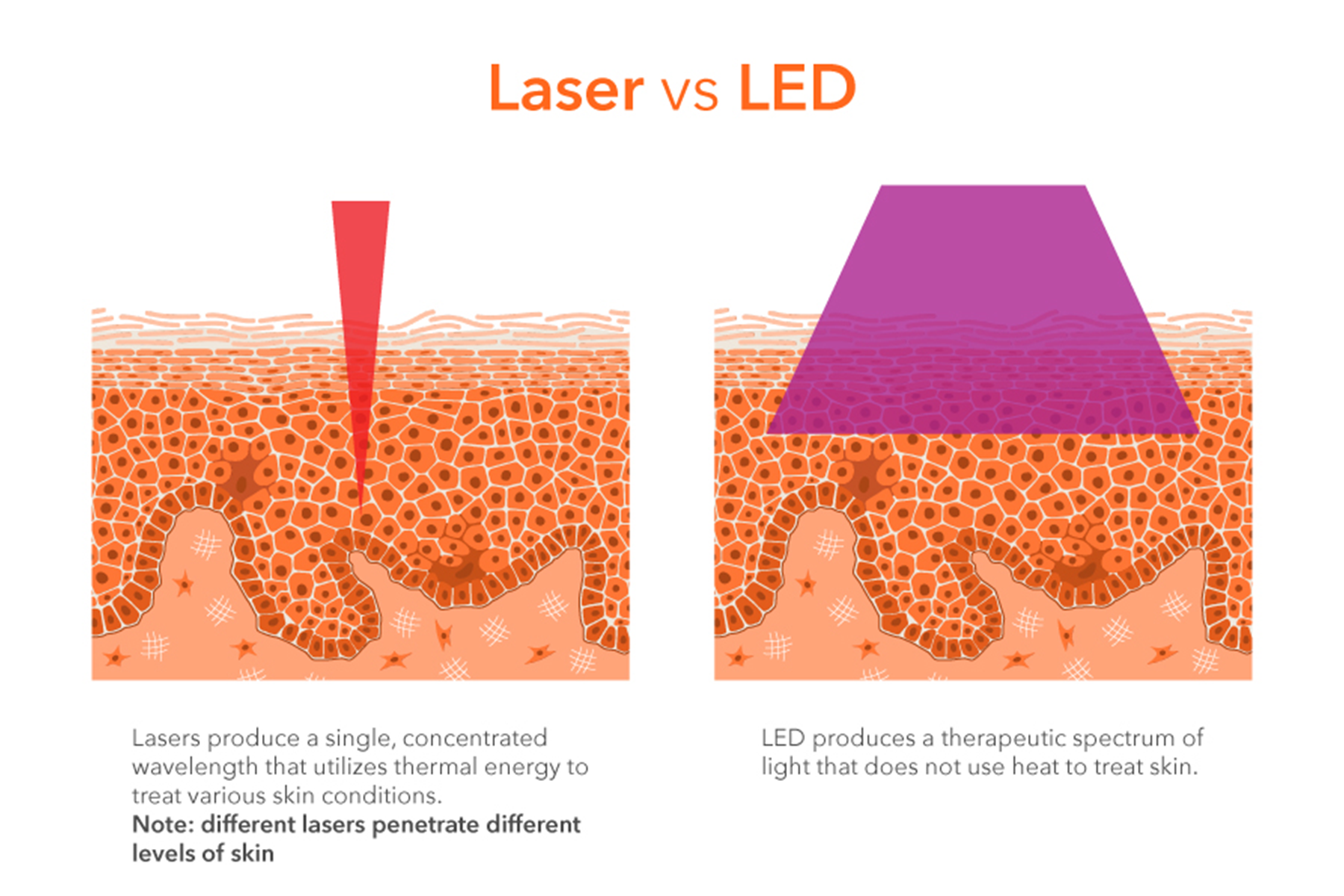
It’s totally fine to DIY your LED. Your laser, not so much
In fact, considering that you need to do LED treatments daily, it’s probably preferrable. Lasers, on the other hand, are not the kind of thing you can just casually use in your bathroom. For one thing, legitimate lasers cost bank. As in, if you came across one for sale online for a few hundred bucks, you can pretty much be assured it’s not a genuine laser (which run in the tens of thousands of dollars). Tools you may see marketed as “at-home laser devices” aren’t actually lasers at all. Remember: Lasers have one specific wavelength. DIY “laser” devices are typically Intense Pulsed Light (IPL) machines that generate multiple wavelengths of light. And while it’s legal in some states for anyone to operate a true laser, due to the aforementioned risks of burns or scarring, it’s not really the sort of thing you want to be doing to yourself (or another person) with only a YouTube video as your instruction guide.
But LEDs and lasers aren’t mutually exclusive
Fortunately, it’s not a Sophie’s Choice situation. You don’t have to decide between LEDs and lasers. For one thing, the two modalities can work great together. (Dermatologists often prescribe a red LED session immediately after a laser treatment because red LEDs reduce inflammation and, well, redness.) Also, LEDs and lasers can remedy different concerns. For example, if you’re troubled by an age spot on your cheek, as well as overall skin laxity, you may decide to have your doctor zap your dark spot since a laser can usually eradicate a spot completely in one or two sessions. But you may opt for at-home IR and red LEDs to build the collagen necessary for firmer skin.
